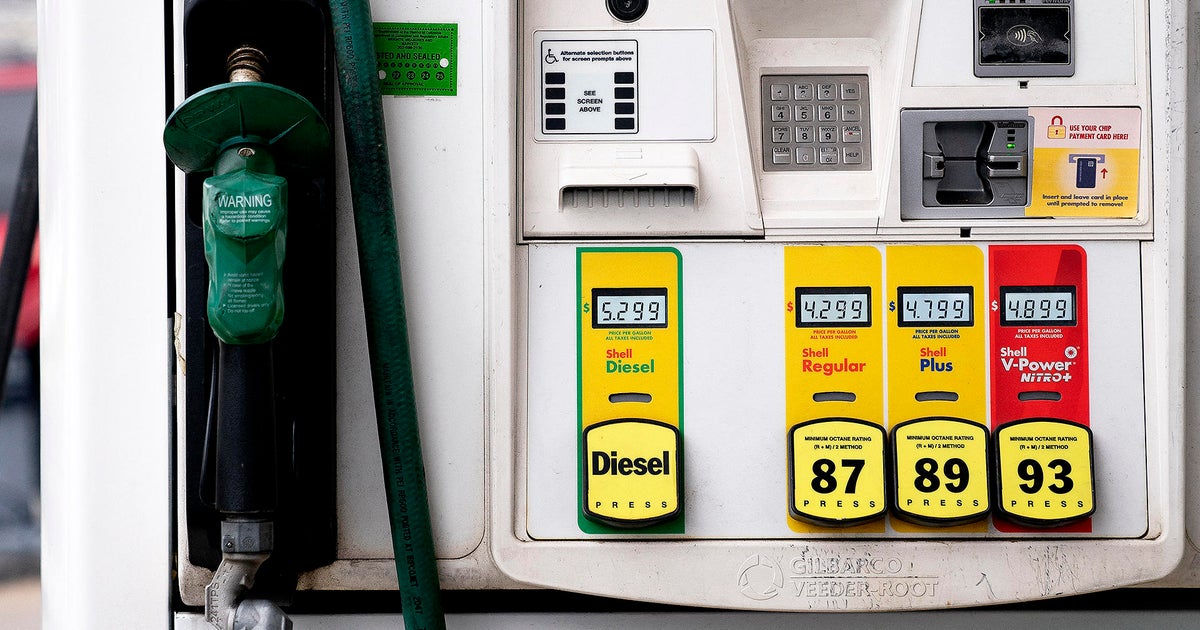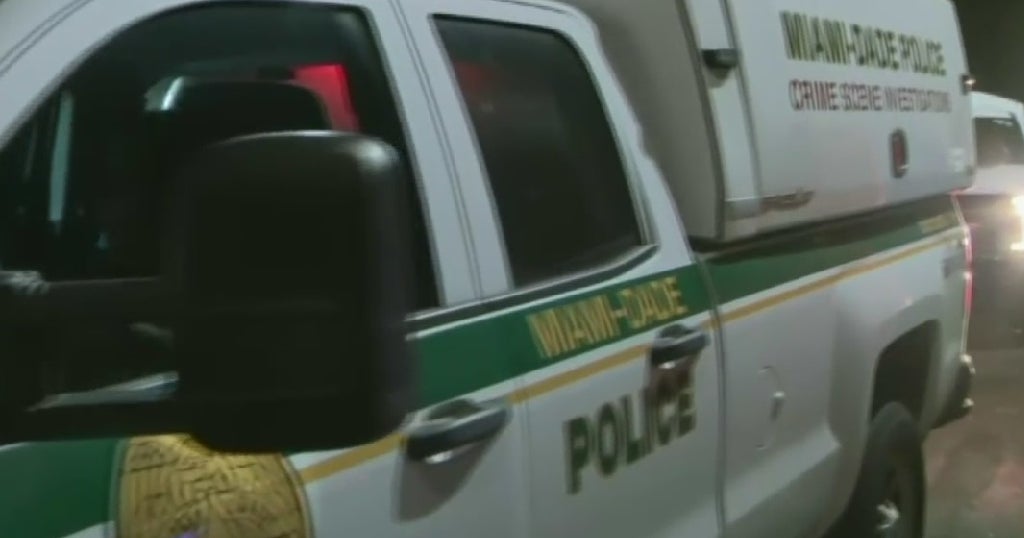Hurricane Andrew Remembered: 20 Years Later
SOUTH MIAMI-DADE (CBS4) – While South Florida watches Tropical Storm Isaac extremely closely this Friday, August 24th, 2012 it was August 24th, 20 years ago that changed the landscape of South Florida and the lives of hundreds of thousands of people for ever.
Hurricane Andrew roared through in the early morning darkness of August 24th, 1992: A howling, almost evil-sounding wind blew across South Miami-Dade County. When dawn broke, the light of day revealed unspeakable destruction.
Hurricane Andrew, a category 5, the most ferocious there is, was the most costly natural disaster the United States had ever seen.
As the monster storm departed, a light rain fell on 80-year-old Betty Levy, who sat stunned amid the pieces of her house that had blown down around her.
"There's nothing I can do anymore, all my life savings," she said, her voice trailing off.
Hers was a loss mirrored thousands of times over in the hardest hit hurricane zone that stretched from Kendall to Homestead and Florida City.
"Everything we own is gone," a man said blankly, sharing a shock that engulfed hundreds of thousands of residents.
For block after block, mile after mile there was devastation. Homes not just damaged but demolished.
"I spent the night in a closet, lying on top of my baby," said a woman walking among the roofing and lumber and Mediterranean tiles littering the street in her South Dade development.
CBS4's Al Sunshine and his family also rode out the storm in a closet of their home near Metro Zoo, known now as Zoo Miami.
"We were huddled in here, literally never knowing if we were going to get out of the house alive or not," said Sunshine as a photographer videotaped the closet that remained intact, unlike the bulk of Sunshine's house.
"There's absolutely no way to describe what it's like to see your house in pieces," Sunshine reported just hours after the storm passed, his voice cracking as the reality of loss set in.
Everywhere, there were odd, confusing images. A jetliner at Miami International Airport, its nose smashed and face down on the tarmac. A fifty foot yacht parked in the middle of a street, blocks from the bay. Cars and trucks tossed about like Tonka toys. A big U-Haul truck somehow came to rest on its back on top of the building where it had been parked.
South Florida lost shopping malls and restaurants. Some churches had roofs ripped off as if the Devil himself had had his way with them. From a helicopter, photographers could record the exposed sanctuaries. In many areas homes were rendered little more than mulch, and others were left with just the walls standing, and not all the walls. Trees, the ones that were not blown down, were denuded, stripped bare with broken limbs contorted; dark, jagged silhouettes against a gray sky. Everything that makes a community was gone with the wind.
Homestead Air Force Base, the jet engine of the South Dade economy, was destroyed. War planes were strewn about the base like cracked pieces from a G.I. Joe set.
Nearly a million customers were left without power.
Thousands of utility workers moved in, seemingly not knowing where to start.
"Oh, Man," exclaimed one lineman. "This looks like someone nuked this whole area."
Shock was followed by desperation. Without power, water and ice became like gold, a dire situation that was exploited. On one street corner a couple of men who had come down from Broward County sold water out of their pickup truck - $2 a gallon. It was gone in minutes.
Profiteers from North Carolina drove down with a semi-tractor trailer truck filled with ice. They made a small fortune as a huge crowd gathered, holding fists full of cash up in the sweltering August heat. The tractor trailer emptied out in half an hour. A woman who got no ice sat on a curb, sobbing, her face in her hands.
There were good turns, of course.
"We're trying to help," said a man who drove from Broward with his van loaded with food, handing out free lunch and drinks.
"Do you know where your next meal is going to come from after this?" a reporter asked Debbie Crawford, standing in line with her three children. "No, Ma'am, I don't," Crawford replied, her voice choking. She and her children would get no lunch. The Samaritan's supply of baloney sandwiches, drinks and milk ran out while she was waiting her turn.
The Salvation Army, Red Cross, churches and others rushed to help with food and medical care.
A Howard Johnson's on South Dixie highway was converted into a field hospital. There were hundreds of storm related injuries.
"Heart attacks, broken legs from people falling off roofs, lacerations from all the glass and metal that's thrown around everywhere," explained a volunteer doctor.
At a triage center set up under a tent in Homestead, four year-old Alfonso Suarez bawled as he was placed on a gurney. The boy had a wall fall on his head during the storm, three days earlier. A volunteer doctor from Manatee County diagnosed a skull fracture and a private ambulance took Alfonso to a hospital to the north, where there was power. The doctor marveled at the misery around him.
"They're without their roofs, they're without water, they're without electricity, and it's more like a third-world country right now," he said.
Looters went to work.
"Don't you know that's a crime, don't you know you can go to jail for that?" a reporter shouted at young people hauling merchandise out of a business in Cutler Ridge.
Hundreds of looters would be arrested in the days following the storm.
Homeowners and businessmen armed themselves. Signs were scrawled on the front of houses and stores. "You loot, we shoot," read one. "Yes, I have a gun!" read another.
"It's been three days without sleep," a weary store owner said, standing at his front door with an assault rifle at the ready. One looter, armed with a shotgun, was shot in the head by a homeowner who was himself armed, and obviously a better shot.
The National Guard and relief workers trickled into a hurricane zone where a flood of aid was needed.
A sign created in eight foot tall letters on the roof of a heavily damaged home said it all: "We need help, President Bush."
Kate Hale, Miami-Dade's director of emergency services, stood before a bank of cameras and delivered a desperate, angry appeal to the federal government that played on the national news.
"We have a catastrophic disaster, please come down and help us!" Hale exclaimed. "Where the hell is the cavalry on this one?"
President George H.W. Bush bristled in subsequent comments from the Rose Garden at the White House.
"I'm not going to participate in the blame game," a testy Bush said.
But Hale's plea got help moving. Seemingly in an instant, huge military cargo planes began descending on Miami-Dade, disgorging trucks, tons of supplies and troops. They fanned out in huge numbers across the South end, feeding the masses in field kitchens, providing security and erecting tent cities to house thousands who had been left homeless and on their own against the heat and the elements for more than a week. Men, women and children filled the tent cities where they were fed and had a place to get out of the rain.
The tent city residents would eventually move into FEMA trailers, where some would remain for years.
Andrew killed 44 people, 19 directly, and the remainder in post-storm related accidents. Firefighter John Byers was killed when a falling limb crushed his skull as he searched for victims.
Andrew left 165,000 homes destroyed or heavily damaged.
The losses, including the cost of cleanup, approached $30 billion. A quarter of a million tons of debris was removed from the hurricane zone.
CBS4 reporter Gary Nelson's father-in-law, Jim White, came down from Jacksonville the day after Andrew struck, to help Gary's family patch up and clean up their home in Palmetto Bay. Cement roof tiles had gone through their shutters like mortar shells, most of their windows were broken, ceilings fell in, and a hundred foot tall oak tree in the back yard resembled a stick figure.
Jim brought his camcorder with him. Training it down the our storm ravaged Palmetto Bay street, he remarked, "It's the damndest thing I ever saw." It was the damndest thing anybody ever saw.
South Floridians could not imagine a day so painful 20 years ago, and could not imagine how many hard days and years would lie ahead.



